-
Posts
137 -
Joined
-
Last visited
Content Type
Forums
Detector Prospector Home
Detector Database
Downloads
Posts posted by oldmancoyote1
-
-
There are several silvery metals that melt at low temperature including lead, antimony, and tin. That's not enough to identify it.
Unless tiny fragments are REPELLED by your super magnet, it may not be lead. Lead, as well as similar metals, are diamagnetic, the opposite of iron.
Tiny silver droplets indicates it is an amalgam of mercury and some other metal.
Platinum does not form an amalgam and it melts at a very high temperature.
I don't know what it is.
-
OK. You showed me your rig, I'll show you mine.
This is actually a powered recycling sluice box along with a Mike' Trommel. Same principle, but the water's too far away to pump. Two partially filled 5 gallon buckets of water is all it needs. There is a battery hidden between the wheel and the tub. There is a system of tubs, screens, and two bilge pumps inside. One is actually all it needs. I have since replaced the sluice box with a larger Angus McKirk drop riffle sluice box. It works great. Trouble is, it's still within 100 yards of the river which is illegal here in California so I haven't been able to use it for a few years.
-
Wow! Any clues to how you were so successful with a Gold Racer? I'm still looking for my first hit.
-
Jeff's comment reminds me of my youth when I hiked around and into Arizona's Meteor Crater. Back then you could find hand-sized pieces of hard compact meteoritic rust called "shale balls". I really don't understand how they were created, but they were fascinating. You could actually find small blebs of melted meteorite within them. A guy I knew was finding diamonds by sawing them with a diamond saw. When the saw stopped cutting, he knew that he had found one. All of which is irrelevant to this discussion, but interesting.
-
It could be a hunk of deep rust off a large iron object. Perhaps it has an iron core. You could crack it open to see.
-
Watch winders? So that's what I threw away last month. I thought it must be some kind of junk part.
-
While experimenting with my Gold Racer, I think I saw more stable VIDs by raising the coil and scanning perpendicular to magnetic north. There seemed to be a height that was most stable, and scanning perpendicular to magnetic north tended to eliminate oscillation between very low and very high values. It wasn't perfect, but it was suggestive. I'm wondering if anyone else has anything to offer about this.
-
Here is the next piece in my posts about the geology of and prospecting for pocket gold in the Klamath Mountains of California. If this sort of thing interest you, let me know.
You might use this geological info to locate pocket deposits without using the standard method of following a pocket's trace (the debris trail of small gold and associated minerals)leading uphill to the pocket itself.*
Trace the contact between black shale in contact with greenstone looking for quartz veins. Here is how to recognize a prospect of this sort.
Look at this photo.
It shows Bragden black shale on the left with Copley Greenstone out of view to the left, and off to the right is more black shale. I took the small outcrop in the center of the photo be be black shale, as well, until I put my hand on it. It's a wide quartz vein extending beneath the soil to the left and right.
Here is a photo of a piece of this vein.
The black is manganese oxide (see my first post). Many of the holes once contained pyrite as shown by the rust-colored stain and perhaps calcite (again see my first post). It is highly likely that the pyrite once contained gold, and that gold is located somewhere downhill and close-by. The coin is a US quarter.
The quartz of the oxidized zone within the Bragden formation in the well-known pocket deposit at the Mad Mule Mine has been described this way: "The quartz is honeycombed with cavities, many of witch are partially filled with sooty manganese oxide."(Pocket Deposits of the Klamath Mountains California, Ferguson, 1915)
I'm currently looking for that gold using two possible models: hosted within streaks and pockets of calcite; and plating the bottom of a nearby stream or dry water course.
Calcite-hosted gold in pocket deposits can "...consist of calcite covered with fine-sized gold and manganese oxides often in cracks and fissures in the calcite." (Canadian Gold Prospector: http://gpex.ca/smf/index.php?topic=11152.20). I carry a small sniffer bottle containing weak hydrochloric acid to test whitish streaks. If they fizz, it is calcite.
Downhill from this site is a small stream. I'll probably have to dig to the bottom of the center of the stream looking for the gold. Here is a photo
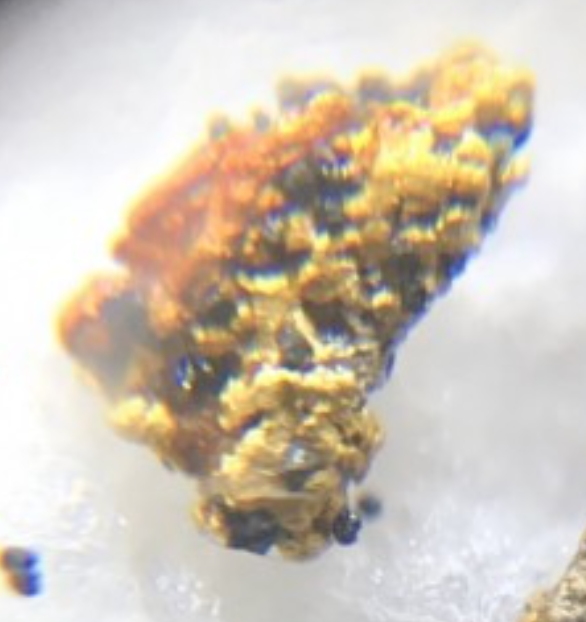 posted by Creekboy here: https://www.detectorprospector.com/forums/topic/7359-odd-gold/?tab=comments#comment-74991. of black sand encrusted by gold. It's probably from such a deposit.
posted by Creekboy here: https://www.detectorprospector.com/forums/topic/7359-odd-gold/?tab=comments#comment-74991. of black sand encrusted by gold. It's probably from such a deposit.
Alternatively 100 feet away I have found stream gravels exposed near the edge of a small plateau. This is probably a paleo-stream bed (geologically old and now dry). At one time the gold-bearing fluids may have made their way here and formed a pocket in or below the bed. I may dig some of this looking for the gold.
The recent fire here has made the area inaccessible. So, I sit here twiddling my thumbs. If folks are interested it this sort of thing, I'll report later on any progress. I plan to use my Gold Racer to help in the search.
* Jack London's short story The All Gold Canyon http://livros01.livrosgratis.com.br/ln000422.pdf describes the standard method well. Useful modifications and extension of this technique have been published by many people including [trinityAU https://www.detectorprospector.com/forums/topic/7359-odd-gold/?tab=comments#comment-74991, and by EMF http://gpex.ca/smf/index.php?topic=12499.0, but the basic technique is the same. Tom Bohmker describes a similar metal detecting approach here Elusive Pocket Gold of Southwest Oregon.
Oldmancoyote
-
This isn't the first reference I have seen to cleaning a site before detecting. Vegetation debris is sometimes the problem for me. In the Klamath Mountains, the pine needles and other forest duff is quite thick, I am experimenting with cleaning a reasonable area to see if that makes a difference. In clear cut areas, I have found that it's impossible to proceed before clearing away the branches etc. I carry a cultivator for both needles and clear cut debris for this purpose.
Is preping a site common?
-
Since bedrock is mostly exposed, try sweeping the area with an array of super magnets mounted on a pole arranged as if it were a garden rake. It's certainly not a perfect solution, but it could be a major improvement.
Alternatively, you could build a similar device using an electro-magnet for easy disposal of the trash. Hope this helps.
Good luck.
-
Looks like sand encrusted with gold. This sort of thing might form when gold-bearing fluids are reduced on reaching a water table low in oxygen. For a more complete discussion see my post on this forum here: https://www.detectorprospector.com/forums/topic/717-finding-pocket-gold/?page=4
-
Good information Steve.
A slightly different interpretation of pocket gold deposits in the southeastern Klamaths would go like this:
Hydrothermal waters (hot water) moving upward through the greenstone of the Copely formation tends to lay down some quartz and perhaps other minerals like pyrite and calcite, but does not lay down much gold. When these waters reach the black shale of the Bragden formation, the carbon causes the gold in solution to precipitate within the pyrite (5% gold by weight might by typical). This, however, is not yet mineable.
The next phase occurs with oxygen-rich rain water causes the pyrite to oxidize. In the presence of manganese oxide, the iron in the pyrite completely oxidizes to ferric iron yielding an acid solution rich in sulfate and ferric iron. Because these black shales were layed down in sea water, there is abundant salt present. This sodium chloride added to the sulfate and ferric iron in a acid solution forms a complex which dissolves the gold.
The final phase occurs when this descending gold-carrying fluid either: 1) encounters enough calcite to neutralize the acid precipitating the well-known porous gold of pocket deposits or 2) encounters the water table where the low oxygen content of the water table reduces the ferric iron to ferrous iron again precipitating porous gold.
There are two other larger belts of greenstone overlain by black shales in the Klamaths. Both lie well to the west of the Copely-Bragden belt. You could spot them easily on a geologic map because they lie immediately to the west of serpentine belts. Each should contain pocket gold deposits of this type.
There are other pocket gold deposit models, but I am still learning about them. I would, in particular, like to hear more about the occurrence of pocket gold deposits adjacent to serpentine/ultra magic rocks. I'm not necessarily looking for scientific observations. Miners often have practical knowledge of mineral deposits that exceeds that of those of us who are economic geologists.
Oldmancoyote
-
On 5/2/2018 at 3:04 PM, Mike Hillis said:
A validated loss characteristic is more valuable than the jewelry find itself.
Pardon my ignorance. What is loss characteristics.
-
If you are not familiar with the pocket hunter's techniques for following a trace to the source, you should do a web search for pocket gold.
-
Thank you Steve -
Hi Steve:
Just re-read your "Steve's Guide to Threshold, Autotune..." It helped a lot. Thanks.
I do have a question though. I understand V/SAT. It's about how fast autotune re-adjusts the threshold after encountering some disturbance like a target. However, I'm unclear on how that relates to Ground Balancing and Tracking. It sounds like they are the same. Would you please explain that?
Thanks
-
A good place to start is the USGS MRDS data base. You can download selected areas in a format compatible with Google Earth. Start here: https://mrdata.usgs.gov/mrds/select.php?place=fUS&div=quad
-
It certainly looks profession. Is it practical? Do you continuously pump or add dirt, then pump...? It looks like it would benefit from rocker action.
-
Late last summer I took my new Gold Racer to the park along with a conventional detector. I swung both, one in each hand. At one point I got a strong signal on the GR but nothing on the other detector.
I dug it and found a one carat cubic zirconia on a silver tie tack. I took it home, and just before I left for my winter home in Mexico, I put it under the GR for an air test. It came up a unshakable ID50.
Now ID50 is about what I would expect for platinum. I was way too busy to pursue it further at that time. Now all winter long I'm going to wonder: Why would anyone mount a cubic zirconia on a platinum setting.
-
Angus MacKirk... was acquired and moved from Boise to Canada. I bought mine from Boise online before the move. I suppose the new owners at http://brokenback.ca would be a good place to look. They do indicate several west coast retailers.
-
Thanks guys.
I did a study last summer. I dug the first 20 "hot rocks" < ID 5 and >ID 90. All were hot rocks. Still I wonder about these targets. Next summer I'll re-do the test with maybe 50 "hot rocks." Finding 50 "hot rocks" here will not be a problem. : ) If I still don't get anything, I'll kiss off "hot rocks."
I'll also follow the consensus here and dig anything else that doesn't lock on ID 20/21. After a couple of months, I'll re-evaluate.
I'll also do more testing with test nuggets in hopes of learning more about the audio signal. Training my ear will be a priority. I'm utterly in the dark about audio.
Any further advise from forum members would be much appreciated.
Thanks again guys.
Oldmancoyote1
-
Steve:
I spent about a month learning my Makro Gold Racer this summer. I went out almost every day. Most of the time I worked bare red soil over siltstone (ground balance values about 67) in and close to old pocket gold diggings in the Klamath Mountains. I didn't find any gold this year, but next summer I hope to do better.
I have a few questions. Your answers might well help me succeed.
1) Would you advise I change the following protocol: In All Metal mode I ignore anything less than ID 5 or greater that ID 90 (lots of hot rocks here). I'm not inclined to dig anything that shows a dominate signal above ID 65 or anything that mostly grabs onto ID 20/21. However, most of my targets show multiple IDs (mostly in the teens and 20s with a few IDs above 70), and I dig any of these that show a few indications in the 40s or 50s amid the other IDs.
2) Do you feel you get useful information from careful attention to differences in the audio response? I discard responses giving the null-beep-null pattern even though I have seen some using a test nugget. Otherwise I ignore differences in the audio.
3) In one of your posts you dismiss using the Gold Racer in highly mineralized ground. I will have to deal with a lot of this next summer. Would you discuss the issues you had with highly mineralized ground?


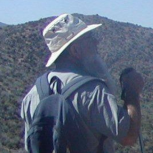
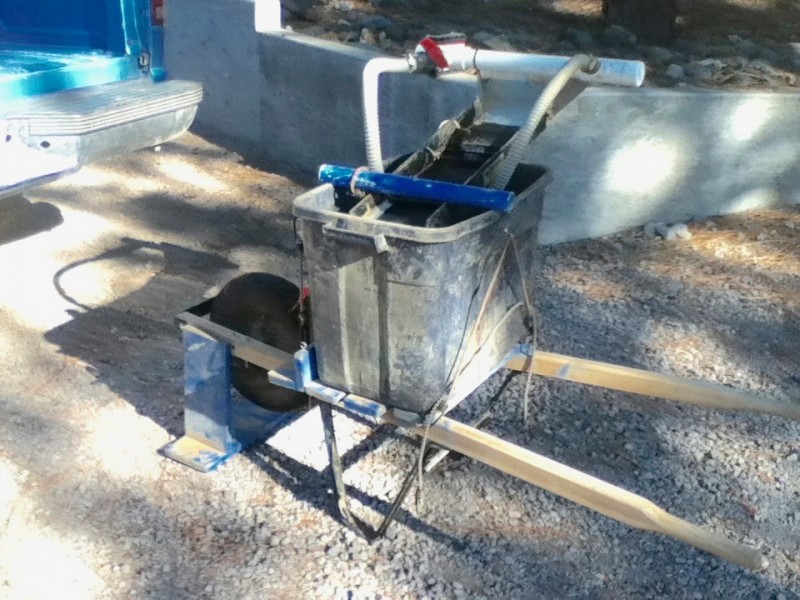
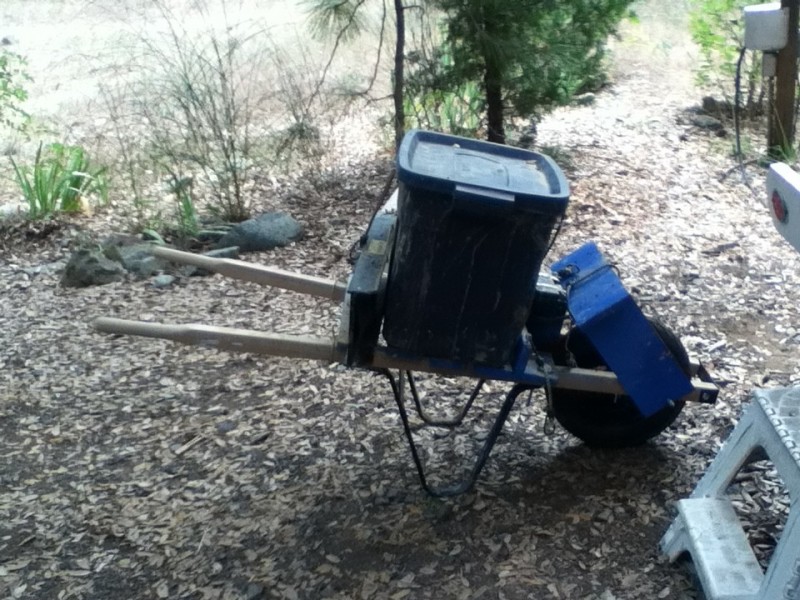
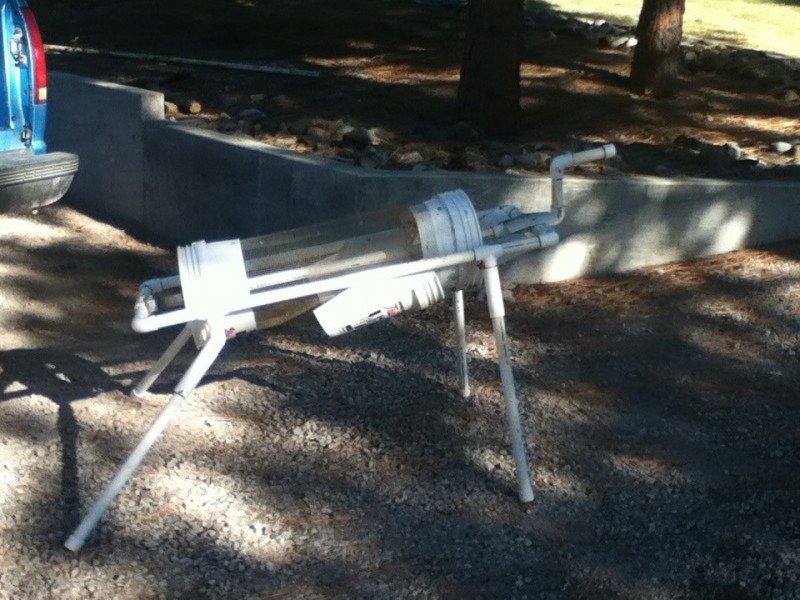
$300 Waterproof Beach Pi Detector
in Metal Detector Advice & Comparisons
Posted
Bought mine yesterday.